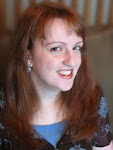Tuesdays at Castle Glower are Princess Celie's favorite days. That's because on Tuesdays the castle adds a new room, a turret, or sometimes even an entire wing. No one ever knows what the castle will do next, and no one—other than Celie, that is—takes the time to map out the new additions. But when King and Queen Glower are ambushed and their fate is unknown, it's up to Celie, with her secret knowledge of the castle's never-ending twists and turns, to protect their home and save their kingdom. This delightful book from a fan—and bookseller—favorite kicks off a brand-new series sure to become a modern classic. (Amazon)
Review by Kim Harris Thacker, writer, mommy, and Bookshop Talk Host
First of all, I want you to know that I just rubbed my hands together in delight, because I am so, so excited to review TUESDAYS AT THE CASTLE, by Bookshop Talk’s own Jessica Day George! This is such a marvelous book, by such a marvelous author. Jessica’s books are always so vivid and utterly gobble-worthy...but there’s just something extra-special about this first title in her new middle grade series. Maybe it’s the setting...
The Land of Sleyne sounds picturesque, with its mountains and bowl-shaped valleys, but it’s the castle that serves as the home for Sleyne’s king (Glower the Seventy-Ninth) and his family that thrills me. After all, what child (or young-hearted adult, for that matter) doesn’t long for secret passages and magic? The layout of Castle Glower is in a constant state of flux, so it’s like one gargantuan maze of secret passages, built through magic. Now that is my idea of a fantastic setting—a castle that can alter its form at will. And yes, I said at will, because Castle Glower has a will. The castle is a key character in TUESDAYS, and come to think of it, maybe it’s the array of characters that has me gushing over this book.
Let’s keep talking about Castle Glower as a character, shall we? The castle is like a human in so many ways, even suffering from boredom! But unlike humans, who tend to eat potato chips and watch movies when bored, Castle Glower “stretches,” resulting in an added turret here, a room there, and sometimes even a whole new wing. This seems rather whimsical of the castle, but don’t be fooled. Castle Glower is not a character to be trifled with. Those who visit the castle had better mind their Ps and Qs, or they could end up like the Ambassador of Bendeswe, who found himself walled into his bedroom once the castle found out he was a spy.
Another character to love is Princess Celie, who is spunky, courageous, and smart. She also possesses an atlas of the changing castle, and it is for this reason, perhaps, that the castle pays special attention to Celie’s needs, even growing escape routes when she needs them, and boy, does she need them! This is a girl who attracts adventure, for sure. I can’t wait to read more about her in the other books in this series!
There are also lots of other wonderful characters in TUESDAYS, such as the handsome Pogue Parry, the odd-but-loveable Prince Lulath of Grath (and his doggies), the spine tinglingly evil Prince Khelsh of Vhervhine, and, of course, Celie’s family. I love the relationships between Celie and her siblings, in particular. Her older brother, Rolf, is the second son of the king and queen, but the castle “chose” him to be King Glower’s heir, by moving his suite of rooms next to the Throne Room. Celie’s older sister, Lilah, is capable and a bit bossy, but proves her worth many times over in TUESDAYS. Celie’s oldest brother, Bran, was sent to a college for wizards after the castle kept furnishing his rooms with books and astrolabes. It is, in fact, on the journey to witness Bran’s graduation that Celie’s parents (who sound like the best king and queen ever) are ambushed and...well, you’ll just have to read the book if you want to know what happens to them and to Celie and her siblings as a result.
I do love the setting and the characters in TUESDAYS, but there is so much more to love, too! Jessica’s writing is simple, but vivid. The story moves quickly—there is never a dull moment. There is so much to love, and every element of the book works with every other element, creating a tight adventure story that any reader will enjoy.
And now for a bit of good news: TUESDAYS AT THE CASTLE came out today, so you don’t have to wait to pick up your own copy! Yahoo!
Market: This is being marketed as a middle grade fantasy, but I think younger (8-ish) and older readers would certainly enjoy it, too. I gobbled it up, and I’m...uh...much older than 8.
Language: none
Sensuality: none
Violence: mild (rumors of death, plotted assassinations, chase scenes—all appropriate to middle grade fiction)
Mature Themes: political rebellion, disloyalty, family crises
Book formats:
Happy Launch Day, Jessica!!!!


































